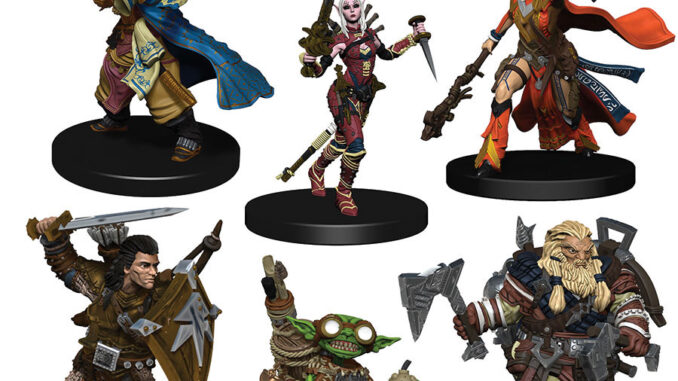
This week it’s time to take a look at an eternal debate within RPG circles: Theatre of the Mind versus Maps & Miniatures.
Theatre of the Mind
Theatre of the Mind is the “classic” way of looking at games, in that the entire action takes place within the minds of both the Game Master and the players, and it was (ironically) the one originally championed by Gary Gygax, in spite of the roots that RPGs have in Wargaming.
The greatest advantage to the Theatre of the Mind is that you do not need any models, maps, or even space to be able to play with, as all it requires is a GM with an active imagination.
However, in order to do so there are a few things to bear in mind. First of all, the Game Master does need to be very descriptive in how the environment is portrayed. This is a crucial part of it, because quite simply: You are the EYES AND EARS of the heroes. Not just that, but you are every single sense that they have – and not only that, you have to make sure that they understand where they are in the context of any given combat. For many games (Star Wars and Genesys spring to mind) that’s likely easier to do, due to the idea of “long/short/engaged” ranges and so on, whereas more traditionally based games care a lot more about positioning, ranges, and things like flanking.
Why you should do it: With the right, and generous, GM, it makes for much faster gameplay than someone moving a miniature around on a map, especially when you’re playing online, where there might be connection issues. It’s also a lot cheaper than having to invest (or create) maps, tokens, programs, or whatever, for your game.
Why you shouldn’t do it: It’s easy to lose control and overview of what’s going on, especially as a player since it’s all in the GM’s head. For some people, it’s also a lot harder to understand and visualize what is happening than when using a set of physical tokens.
Maps & Miniatures
This is what you see at so many convention tables and live plays. Amazingly painted miniatures and lovingly detailed maps, whether digital, printed, or created from 3D terrain. It is what many consider the “gold standard” and what everyone should strive towards. It’s obviously a bit of a leftover from back in the day when it was more of a strategic miniature game, but so many modern RPGs still use systems where positioning, ranges, and such are integral to how the game plays out, and for those games, this style may well be key.
Of course, no matter what, I don’t think most people can deny the allure of having something right in front of you, that you can look at to see what’s going on, but there is a bit of a downside. People tend to be very visual creatures, and that means that if it’s not represented on the “board,” then no matter how brilliant your description as a GM is, it’s extremely unlikely that your players will choose to pick up on the hints that you may drop.
Finally, unless you’re creating the maps and miniatures yourself, it may also prove difficult to find something that fits. Even just a simple room in an inn may not look like how you envision it. Your players may well go “That closet over on the left, I’ll examine it since we know the villain was here” and you might have to go “actually there is no closet, that’s a table,” and find yourself improvising.
Why you should do it: It makes tracking combat a lot easier for almost any game, even though it might slow it down when people start moving around. It’s a lot more visual, so you don’t have to rely as much on your own ability to describe the situation that the heroes find themselves in, and it just looks and feels good.
Why you shouldn’t do it: It’s expensive, whether that is in cash or in time investment. If you buy them, it might also be a problem to find the right maps and tokens to fit your game. And finally, there’s the issue of (at least if you’re doing it digitally) getting everyone to use the same virtual tabletop – but that’s a different discussion in and of itself, as there are a LOT of options out there, some good, and some bad.
